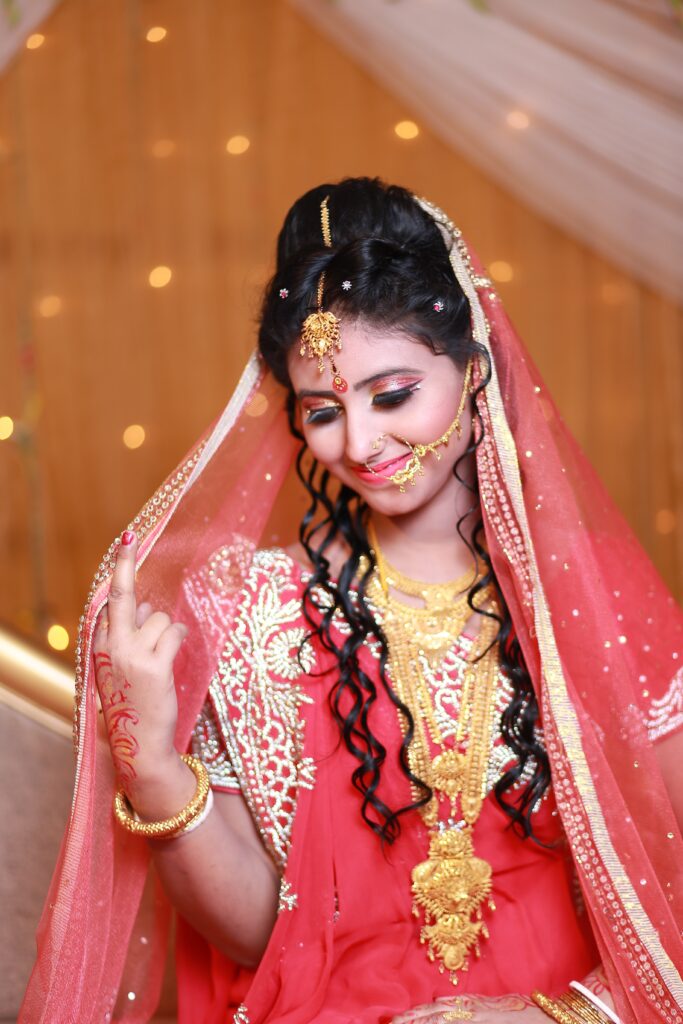For bulk/international orders, please reach us at hello@swaasti.com.
The Mesmerizing Magic of Gota Patti Embroidery: A Heartfelt Journey through Indian Tradition and Beauty

The art of Gota Patti embroidery
Gota Patti embroidery has been a popular form of traditional Indian embroidery for centuries. It is a technique that involves using a thin ribbon of gold or silver called “gota,” which is sewn onto fabric using intricate stitching techniques to create beautiful designs that shimmer in the light.
The process of creating Gota Patti embroidery
Artisans who specialize in Gota Patti embroidery cut the gota ribbon into different shapes and sizes before sewing it onto the fabric. They use their skills and patience to create intricate patterns and designs that add elegance and sophistication to any outfit, especially traditional suits like the Anarkali suit.
Gota Patti embroidery in traditional suits
Gota Patti embroidery is well-liked in Rajasthan and is used to decorate saris, dupattas, and traditional suits that people wear during weddings, festivals, and other special events. Among these traditional suits, Anarkali suit is one of the most famous, and it has Gota Patti embroidery on it. Anarkali suit is a long and flowy tunic that widens at the bottom, and people often wear it with a fitted churidar or palazzo pants.
The versatility of Gota Patti embroidery
Artisans who make Gota Patti embroidery are not limited to using just gold or silver ribbons. They can also use brightly colored ribbons to create a lively and captivating appearance. Furthermore, they can add other materials like sequins, beads, and mirrors to create more texture and depth in the embroidery.
In recent years, Gota Patti embroidery has become more famous worldwide, not just in India. Top fashion shows have featured Gota Patti embroidery, and celebrities and fashion icons have embraced it. Gota Patti embroidery’s ageless charm and adaptability make it a perfect choice for any occasion, from weddings and formal events to even a night out on the town.
The history of Gota Patti embroidery
Gota Patti embroidery has a rich history that dates back to the Mughal era in India. The Mughal emperors were known for their love of art and their elaborate clothing and textiles, which were adorned with intricate embroidery and embellishments. The technique was introduced in Rajasthan, where it quickly became a popular form of adornment for traditional clothing worn during festivals and special occasions.
The distinctive features of Gota Patti embroidery
One of the most distinctive features of Gota Patti embroidery is the use of metallic ribbons. These ribbons catch the light and create a shimmering effect that is both elegant and eye-catching. The embroidery can also incorporate other materials, such as pearls, beads, sequins, and mirrors, to add depth and texture to the design.
If you’re interested in this kind of design, you can check out a wide variety of suits with Gota Patti work from the below link:
https://swaasti.com/product-category/suit/gota_patti/
The enduring influence of Gota Patti embroidery
In conclusion, Gota Patti embroidery is a stunning traditional Indian technique that has stood the test of time. It adds elegance and sophistication to any outfit, especially traditional suits like the Anarkali suit. From metallic ribbons to brightly colored ones and other materials, Gota Patti embroidery continues to inspire artisans and designers around the world. Its influence on fashion and design is sure to endure for many years to come.
